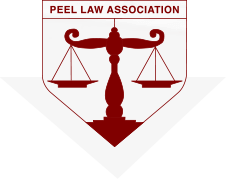You’ve undoubtedly heard the name Katelynn Sampson along with the unforgettable details of the physical abuse she endured at the hands of the people charged with her care and safety. Seven-year-old Katelynn died in 2008 after her body went into septic shock. Her autopsy revealed that she had 70 wounds at the time of her death, and that she had been struck so hard at one point her liver ruptured.
Katelynn’s unemployed, crack-addicted legal guardians had lengthy criminal records and prior involvement with child welfare agencies, but the judge who put Katelynn in their care did not know these details. Donna Irving and Warren Johnson pleaded guilty in 2012 to second-degree murder and are serving life sentences. There is no doubt that ‘the system’ failed this young girl.
Katelynn’s Principle
The inquest into Katelynn’s death led to more than 170 recommendations for changes to Ontario’s child protection laws. The first recommendation of the jury detailed “Katelynn’s Principle”, a directive that the child must be at the centre when they are in receipt of child welfare, justice, and educational services:
Katelynn’s Principle
The child must be at the centre, where they are the subject of or receiving services through the child welfare, justice and education systems.
A child is an individual with rights:
- who must always be seen
- whose voice must be heard
- who must be listened to and respected
A child’s cultural heritage must be taken into consideration and respected, particularly in blended families.Actions must be taken to ensure the child who is capable of forming his or her own views is able to express those views freely and safely about matters affecting them.A child’s view must be given due weight in accordance with the age and maturity of the child.
A child should be at the forefront of all service-related decision-making.
According to their age or maturity, each child should be given the opportunity to participate directly or through a support person or representative before any decisions affecting them are made.
According to their age or maturity, each child should be engaged through an honest and respectful dialogue about how/why decisions were or will be made.
Everyone who provides services to children or services that affect children are child advocates. Advocacy may potentially be a child’s lifeline. It must occur from the point of first contact and on a continual/continuous basis thereafter.
Bill 89 – Supporting Children, Youth and Families Act, 2016
On December 8, 2016 the Minister of Children and Youth Services tabled Bill 89, an Act aimed at introducing sweeping changes to child protection legislation in the province. If Bill 89 becomes law, it will amend and repeal Ontario’s Child and Family Services Act (an Act that has been in place since 1985), and enact a new piece of legislation called the Child, Youth and Family Services Act, 2016.
The Child, Youth and Family Services Act, 2016 gives teeth to the recommendations coming out of Katelynn’s inquest, putting children front and centre when it comes to their care. When unveiling the new Act, Michael Coteau, the Minister of Children and Youth Services, told reporters that it still “baffles” him that a system is in place were children don’t get a say in their care. He called the proposed legislation “the biggest game-changer in child protection in decades.”
Major Changes to Child Protection Law
Highlights of the extensive changes to Ontario’s child protection laws proposed by Bill 89 include:
- Increasing the age of protection from 16 to 18;
- Implementing more culturally appropriate services, particularly for Indigenous and black children and youth;
- Improving the oversight of service providers, including Children’s Aid Societies; and
- Strengthening the focus on early intervention to help prevent families from reaching crisis situations at home.
It is expected that the government will use experts from the child welfare field to help implement the new legislation.













